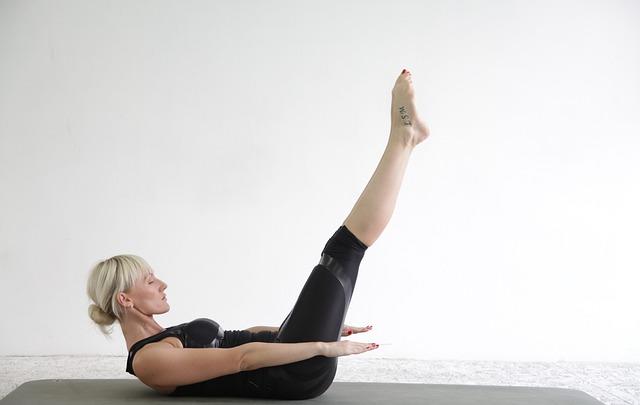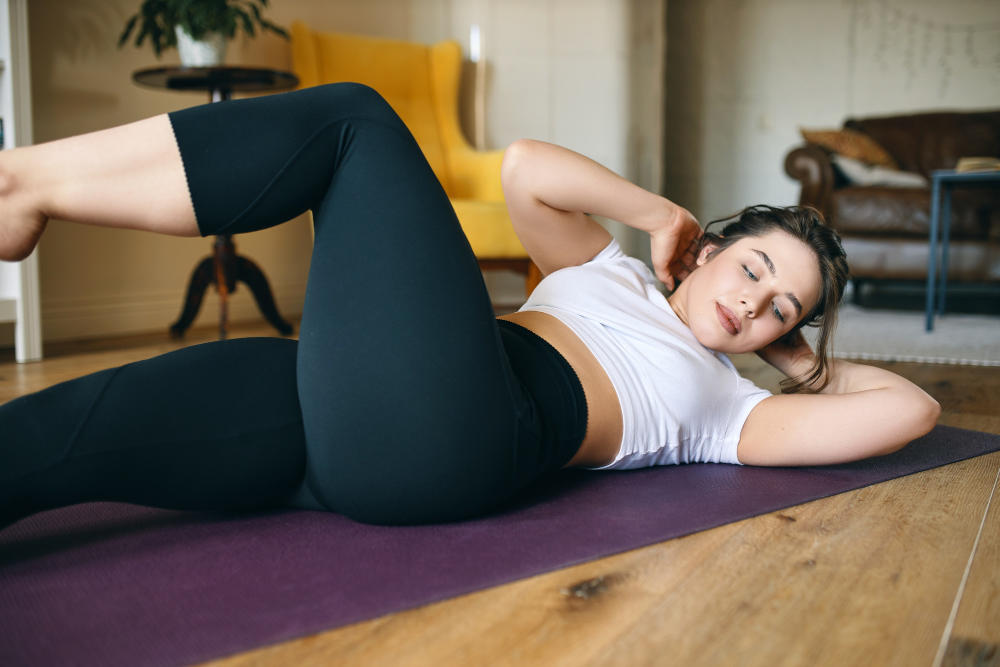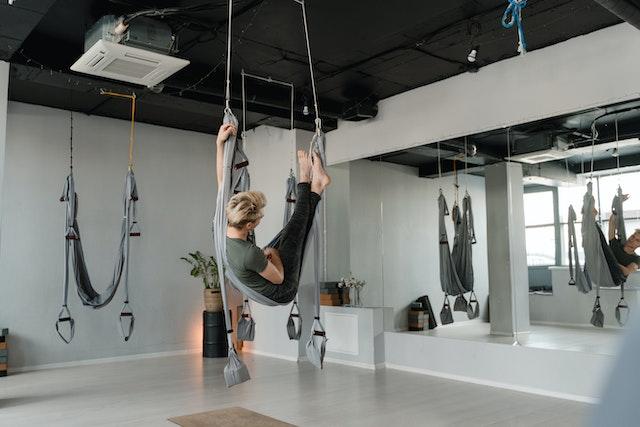In our stressful and fast-paced world, being inactive and sedentary has become the norm. Most people's daily routines are waking up, eating, going to work or school, partying, gaming, and watching TV. In order to cope with the constant stress and competition in our lives, exercising is a crucial element in maintaining physical and mental health. It helps us to relax, makes it easier for us to meet other people, and produces adrenaline.
While many exercises are available, only some are keen on exercising due to time and financial constraints. However, some exercises, such as Pilates, can be done without sacrificing a lot of money and time.
Pilates' history began in the early 20th century thanks to Joseph Hubertus Pilates, a German trainer. It is a form of exercise that focuses on strengthening the body's core muscles, improving posture, and increasing flexibility. While it is often grouped together with yoga, Pilates and yoga are different.
Pilates is low-impact and can be adapted to suit people of all fitness levels. Since it is a low impact exercise, it can be safely practiced by all including pregnant women and children. It is a popular choice for those recovering from injuries or seeking to improve overall physical health and well-being.
Try these five basic Pilates exercises to help you get started. Before starting any new exercise program, it is recommended that you consult with your doctor.

The Hundred

The hundred is a well-known Pilates mat exercise typically performed at the start of most Pilates classes that aims to increase blood flow and warm up the body. Joseph Pilates included it as the first exercise in his book "Return to Life Through Contrology" as part of the matwork series.
If you find this exercise challenging, modify it by doing five inhales and five exhales, repeated five times while focusing on the contraction of your abs. This exercise is ideal for practicing intercostal breathing, which involves breathing into your ribcage and keeping your navel pulled in.
The exercise engages various abdominal muscles, including the laterals, and promotes scapular and trunk stabilization. Although challenging, the hundred can be modified to suit your needs, whether you have back or neck problems or require adjustments to make it easier or more challenging.
To perform the hundred:
- Start by bringing your legs to your chest, curling your head and chest up, and extending your legs to a tabletop position
- Hold onto your thighs and pump your arms up and down while inhaling for five counts and exhaling for five counts
- Repeat this ten times without pausing
- If the move is too challenging, rest your head on the floor instead of curling it up.
Are you a guy looking to practice Pilates? Check out Is Pilates Suitable for Men?
Roll-Ups
The roll-up is a fundamental Pilates mat exercise that is renowned for its ability to challenge the abdominal muscles and help attain a flat stomach. It is considered more effective than crunches and is said to be as beneficial as six regular sit-ups. This exercise is usually done after the hundred and is followed by the roll-over.
Although the roll-up is among the first exercises taught in Pilates, it can be challenging, and modifications may be necessary until you build up your core strength and perform it correctly.
The roll-up exercise in Pilates involves mobilising your spine and engaging your abdominal muscles through a broad range of motion, which can be achieved with a deliberate and unhurried pace that emphasises control, a fundamental principle of Pilates.
Core exercises like the roll-up are efficient for enhancing core strength, stability, and muscular endurance, and these benefits can translate into improved performance in daily activities that involve bending and lifting while safeguarding your spine. Additionally, these exercises can help reduce the risk of falls and injury.
To perform the roll-up:
- Lie on your back on the mat and reach your arms up toward the ceiling. Inhale to prepare
- Then exhale, curl your chin toward your chest, and roll up off the mat slowly
- Keep your legs together, flex your feet like you are pressing them against a wall
- Feel the stretch of your shoulder blades away from your ears
- Breathe in and breathe out, and slowly roll back down with control
- Feel the lower back articulate, then the middle back, the upper back, and finally, your head

Criss-Cross

The criss-cross Pilates exercise is a great way to strengthen your abs and obliques while improving your posture and spinal flexibility. By lifting and twisting, this exercise engages these muscles and promotes body awareness.
It is particularly beneficial for those seeking to build abdominal or hip flexor strength or as a warm-up before physical activity. While the obliques contribute to stabilising posture, they are primarily responsible for flexing and rotating the spine.
The criss-cross exercise specifically targets the abdominal muscles, focusing on the obliques while challenging the hip flexors and breathing control.
To perform the criss-cross:
- Lie on your back on the mat and bring your hands behind the back of your head
- Bend your knees and bring your legs to a tabletop position
- Lift your head, neck, and shoulders off the mat
- As you exhale, twist your left shoulder towards your right knee and extend and straighten your left leg out while twisting the trunk towards the bent knee
- Return to the center as you inhale, exhale to twist to the opposite side, switching legs simultaneously as the trunk moves through the center.
Check out What Equipment is Used in Pilates?
Single Leg Circle
The single-leg circle is a well-known mat exercise in Pilates that can evaluate your pelvic stability and core strength. It requires you to move your leg in a circular motion at the hip socket, and your abdominal muscles need to work hard to keep your entire torso steady throughout the exercise.
This exercise is great for strengthening your core and targeting your quadriceps and hamstrings, as well as promoting good hip joint health. Additionally, it adheres to the essential Pilates principles of centring, concentration, control, precision, breath, and flow, making it an excellent workout for your abs.
As with many Pilates exercises, the single leg circle incorporates stretching and strengthening of major muscle groups on both sides of the body, resulting in improved balance and overall function of the hips.
To perform the single leg circle:
- Begin by lying on your back on the mat. Bend your right knee up towards your chest and straighten your right leg up towards the ceiling
- Inhale and move your extended leg over your body, angling towards the opposite shoulder and across your outstretched leg
- As you exhale, bring your leg down towards the centreline in a circular motion
- Sweep your leg out to the side and bring it back to the starting position at the center
- Repeat this circular motion five to eight times in one direction before switching directions. To switch directions, exhale and move your leg out to the side before circling it back towards your body
- Before switching legs, stretch by reaching your hands up the outstretched leg and holding onto the ankle
- Hold this position for three complete breath cycles while gently pulling your leg closer to your body
The Saw
The Pilates exercise called "the saw" targets the back and hamstrings while stretching the upper and lower body. The arms reach out in opposite directions during the exercise, contributing to the overall stretching sensation.
The saw exercise targets multiple muscle groups, including the spine, hamstrings, core muscles, and hips, ultimately promoting better posture and overall stability throughout the body. Pelvic stability is a crucial area of focus during exercise, as it is essential for maintaining hip stability during upper-body exercises.
To perform the saw:
- Sit up straight and extend your arms out to the sides at shoulder height with palms facing down, as if pointing towards 10 o'clock and 2 o'clock
- As you twist your upper body, reach one hand towards the opposite foot while sweeping the other arm down behind your body
- Twist as far as you comfortably can, making sure to keep your sit bones firmly on the mat
- Return to the starting position and repeat the movement on the other side
- For beginners, sitting on a Moon Box and slightly bending the knees can help with the exercise
If you want to learn Pilates, you can find numerous skilled instructors on Superprof. It's worth noting that some of the tutors on Superprof provide free tutoring for the first hour.
You can make use of this time to talk about your learning goals and preferences, get acquainted with the potential private tutors, and determine if you have a good rapport with them. It's important to have a good relationship with your private tutor because it can significantly affect your ability to learn from them.
Superprof is the best platform to find a Pilates private instructor that suits your needs!















